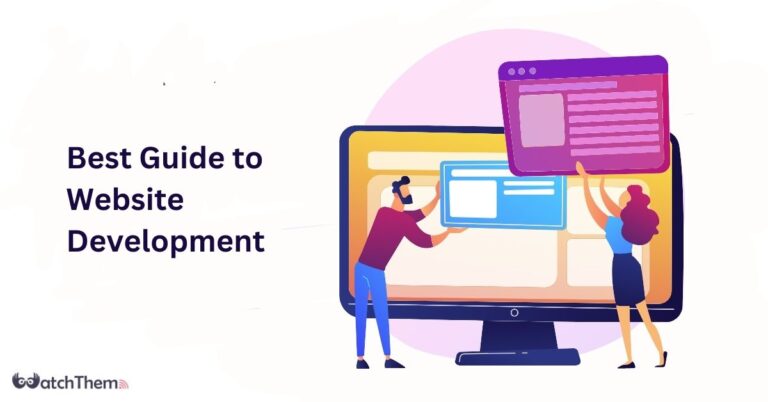Page Contents
Borderless digital technologies are essential to the economic revolution. They surround everyone on the planet to carry out routine tasks and create a place for groundbreaking innovations. Additionally, all the applications and websites that we use to simplify our lives are created by qualified web developers and has undergone website development.
By having a powerful website strategy, developers can make sure that their actions are aligned with their goals, and their efforts are paying off.
Using a website analytic tool such as WatchThemLive allows website owners to determine the success of their website development strategies, and optimize their conversion rate.
Now, let’s get to our main topic, shall we?
What Exactly is Website Development
Website development and website design are the two key phases of website creation. However, it may also include database administration, online publishing, and programming.
While web design explains how a website looks, web development relates to a website’s functioning. When it comes to creating a website, both abilities are crucial. Even if your website looks stunning and is well-designed for your business, it won’t be successful if it doesn’t work correctly.
You can learn how to develop yourself, which will take you a lot of time, or you can hire dedicated web designers, but it will waste your finances. Therefore, study the website development steps in order to finally make the right decision.
What is the Procedure for Creating a Website
It’s not simple to create a website, whether it’s a basic blog site or a sophisticated networking site. Programming languages, website type, content, and resource availability are just a few of the variables that might affect how a website is developed. Here is a quick description of how the procedure works in general.
#1 The Stage of Planning
Making a plan for the website is the first stage in the website development process. This provides a path for you to follow to reach your objective, and personalize your website.
#2 Wireframe construction
A wireframe provides the fundamental organization of your website and acts as a guide for the next stages of website development. To make sure that the website you construct can match user demands and boosts your conversion, you must have this before adding your visual design and content.
#3 Developing the Code
Several coding languages are used while creating website code. Your website should be able to operate in the languages you choose.
#4 Create the Front-End
You are prepared to develop the back-end and front-end of your website now that your wireframe and code are complete. If you have two different teams working on it, they need to be able to collaborate in parallel.
#5 Constructing the Back End
Databases and servers are often the focus of the back-end operations. These parts are in charge of handling requests and data.
#6 Purchasing a Domain
You’re almost ready to publish your website now that you’ve constructed the front end and back end. Although you can already share your website’s IP address with others so they may visit it, it would be better to simply buy a domain name so it is simpler to find.
#7 Getting Ready to Launch
The publication of your website is nearly complete. Your whole stack has now been created, including a domain name and host. However, test your site first before making a public debut to find any bugs or faults that could adversely influence functionality and user experiences.
What Exactly are Website Development Tools
If you have the right equipment, learning web programming will go more quickly. Three tools are required to get started in web development: a browser, a text editor, and a version control system.
#1 Web Explorer
The place to test your code is in a browser. Working with several browsers is necessary for web developers. Among web developers, Mozilla Firefox, Google Chrome, Edge, Brave, Safari, and Opera are the most frequently used browsers. Beginners should start with one kind of browser and progress to others as they gain expertise.
#2 Editors Of Text
In a text editor, you will compose your code. There are many different styles and dimensions of text editors. Although there is certainly a built-in text editor on your computer, it is advantageous to upgrade to a more capable one. The text editors Atom, Sublime Text, VS Code, and Brackets are most often used by web developers.
#3 CMS or Content Management System
The software known as a CMS makes it simple to write, modify, and publish your content. By merging all the features of your website into a single, simple platform, it allows you total control over your material.
A CMS offers the building blocks (such as plugins and add-ons) and enables you to write the code for the structure. Many CMSs include distribution, marketing, and content management support.
They often employ a database (like MySQL or MariaDB) to store a selection of programs and equipment. WordPress, Drupal, Typo3, and Joomla are some examples of CMSs.
Conclusion
Internet users will number around 5.16 billion globally as of 2023, according to a datareportal source. Additionally, numerous IT professionals created about 1.88 billion websites. You may either hire remote software engineers or a professional web development team if you don’t want to learn how to code yourself.
If you are certain about the needs, scope, and budget of your project, you may make a final decision. When you get into the details, there are a lot more questions to be resolved. Only then will your questions be answered.

